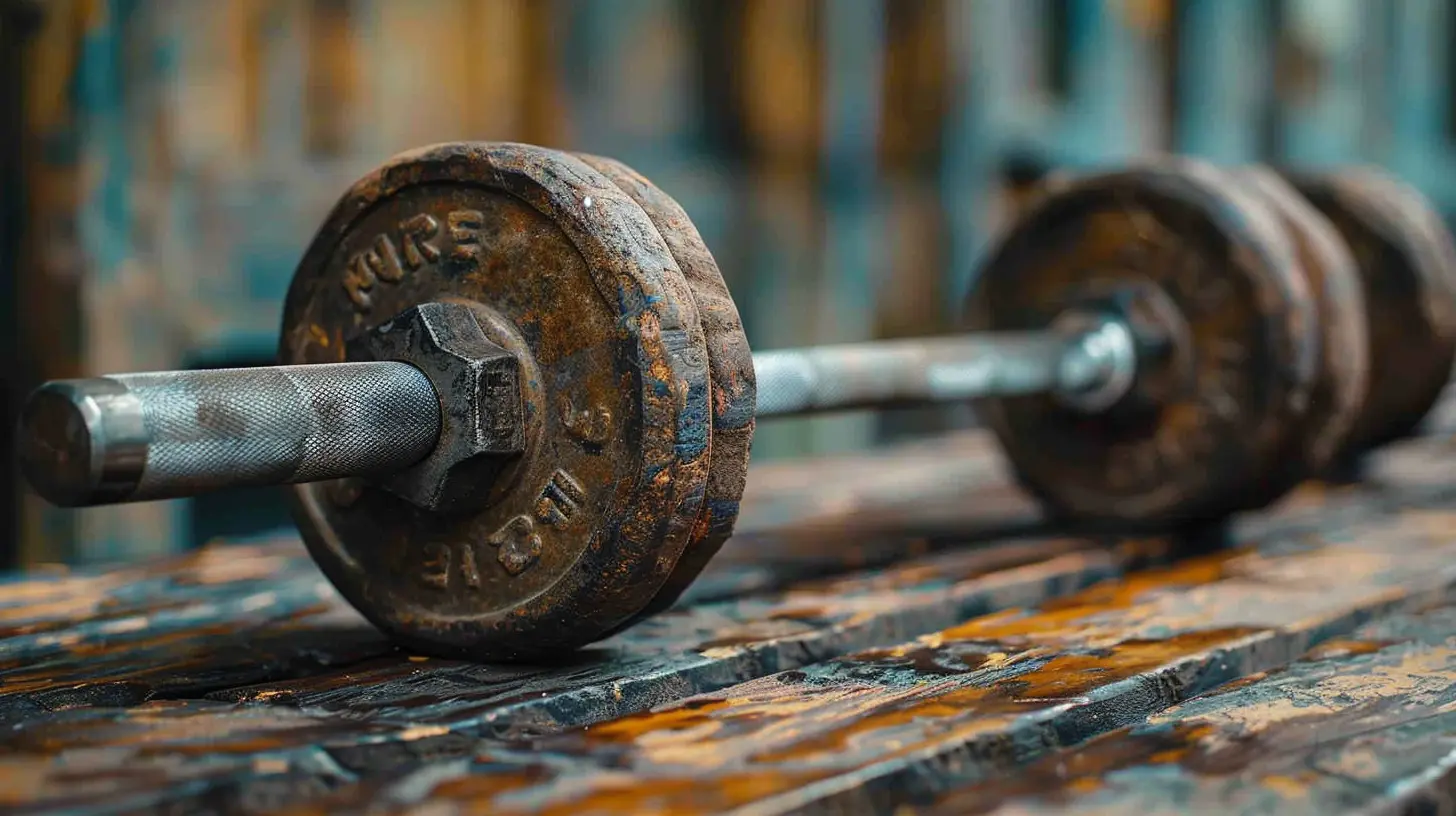Recovery Days: Why Rest Can Make You Bigger and Stronger
12 November 2025
Let’s be honest—when it comes to getting fitter, stronger, or more muscular, most of us are laser-focused on the workouts. We push harder in the gym, chase personal records, and squeeze in extra reps because we believe grinding non-stop is the golden ticket to gains.
But guess what? The secret sauce to getting bigger and stronger isn’t just in the grind. It’s also in the rest.
Yep, you heard that right. Recovery days—those glorious days when you're not lifting a single dumbbell—are actually crucial for muscle growth and overall strength. In fact, without proper rest, all that intense training could backfire.
Let’s dive into why taking a chill pill every now and then might just be the smartest thing you can do for your fitness journey.
What Happens to Your Body During a Workout?
First, a little science (don’t worry, it's painless). When you work out—especially with resistance training or high-intensity intervals—you’re actually creating micro-tears in your muscle fibers. Sounds scary, right? But it’s totally normal and, in fact, necessary for muscle growth.These tiny tears trigger your body’s repair system. It sends in nutrients and hormones (like testosterone and growth hormone) to rebuild the damage. And here’s the kicker: your muscles don’t grow during the workout itself—they grow during recovery.
So the more quality recovery time you give your body, the more effectively it can rebuild those muscle fibers—bigger and stronger than before.
Why Rest Is Just as Important as Training
Let’s think of your body like a smartphone battery. You can’t keep using it forever without charging it, right? Eventually, it needs a break to power back up. Your muscles are the same. Training depletes your energy reserves and breaks down tissues. Recovery is how you recharge and rebuild.Here’s what rest really does for you:
1. Muscle Repair and Growth
Muscle tissue grows when it’s given time to recover, not while you’re lifting. During rest, the body enters a state known as "anabolism"—this is where the magic happens. Protein synthesis ramps up, and your muscles rebuild to become bigger and stronger.Skipping recovery? That keeps you stuck in a breakdown mode (catabolism), which can lead to overtraining and even muscle loss. Not ideal.
2. Hormone Regulation
Rest days help regulate the hormones that matter—think testosterone, cortisol, and human growth hormone. Overtraining can spike cortisol levels (a stress hormone), which actually breaks down muscle tissue and promotes fat storage. Yikes.Recovery keeps your hormone levels balanced so your body stays in a muscle-building mode instead of tipping into stress overload.
3. Injury Prevention
Ever feel those nagging aches or muscle strains? It’s your body's way of sending smoke signals: you need rest. Constant wear and tear without downtime increases your risk of overuse injuries—think tendonitis, stress fractures, or joint pain.Giving your muscles, joints, and connective tissues a break helps prevent burnout and breakdowns.
4. Improved Performance
Ironically, working out less (in the right way) can actually help you do more. After a solid recovery day, you’re likely to feel fresher, stronger, and more energized. That means better focus, more power output, and fewer sloppy reps.You can’t perform at your best when you’re running on fumes.
The Different Types of Recovery
Not all rest is created equal! There’s a big difference between lying on the couch binge-watching Netflix and taking an active recovery day that supports your gains. Here’s a breakdown:Active Recovery
This is when you still move your body, but at a much lower intensity. Think:- Light walking
- Gentle yoga
- Swimming
- Foam rolling
- Easy cycling
Active recovery helps increase blood flow, flushes out toxins, and reduces delayed onset muscle soreness (DOMS). It’s the sweet spot between doing nothing and overdoing it.
Passive Recovery
This is your full-on rest day. No structured movement, just good ol’ relaxation. Great for when you’re super sore, mentally drained, or just need to reset.Some days, your body literally says, “Please. No squats today.” And that’s perfectly okay.
Sleep (The Ultimate Recovery Tool)
If rest days are the unsung heroes of muscle growth, then sleep is the king. During deep sleep, your body releases the most growth hormone, which plays a huge role in muscle repair and recovery.Aim for 7–9 hours of quality sleep per night if you’re training hard. Think of it as your body’s nightly pit stop.
Overtraining: When More Is Too Much
There’s a fine line between dedication and obsession. Sure, commitment is key, but overtraining can be a silent killer to your gains.Here are some red flags you might be overdoing it:
- Constant fatigue
- Trouble sleeping
- Losing strength or muscle
- Mood swings
- Chronic soreness
- Increased injuries
- Loss of motivation
If any of these sound familiar, it might be your body screaming for more recovery time.
How Often Should You Rest?
This is the million-dollar question—and the answer depends on your training intensity, goals, and overall lifestyle. But here’s a general guide:- Beginners: 2-3 rest days per week
- Intermediate Lifters: 1-2 rest days per week
- Advanced Athletes: Active recovery days between intense sessions
Listen to your body. Some weeks might need more rest, especially if your sleep, stress, or nutrition is off. It’s not about being lazy—it’s about being smart.
What to Do on a Rest Day (Besides Couch Surfing)
Still itching to do something on your day off? No problem.Here are a few recovery-boosting ideas:
- Drink plenty of water to stay hydrated
- Eat protein-rich meals to support muscle repair
- Stretch or do mobility work
- Take a walk outside and get some sunshine
- Try a massage or use a foam roller
- Meditate or practice deep breathing to lower stress
- Catch up on sleep with a power nap
The goal isn’t to exhaust yourself—it’s to support your body’s healing process in a gentle, intentional way.
Recovery Is Mental, Too
Let’s not forget the brain. Intense training can be mentally taxing. The discipline, the effort, the focus—it all adds up.Recovery days give your brain a chance to unplug from the grind. You’ll return to the gym with renewed motivation and clarity. Ever notice how your workouts feel 10x better after a real break? That’s no coincidence.
Mental recovery is just as important as physical recovery. It helps prevent burnout, keeps you consistent, and—honestly—makes fitness more fun.
Tips to Maximize Your Recovery Days
Want to make the most of your rest days? Here are some pro tips:1. Prioritize Quality Sleep
Seriously, nothing beats it. Make your bedroom a sleep haven—dark, cool, and quiet.2. Fuel Your Body
Eat nutrient-dense meals rich in protein, healthy fats, and complex carbs. Food is fuel, even on rest days.3. Stay Hydrated
Water helps transport nutrients to your muscles and flushes out waste. Dehydration can slow down recovery.4. Stretch It Out
Gentle stretching improves flexibility, reduces muscle tension, and speeds up recovery.5. Keep Stress in Check
Chronic stress raises cortisol, which can mess with recovery. Try journaling, meditation, or simply unplugging from screens for a while.Final Thoughts: Don’t Fear the Rest Days
Too many people still think of rest days as a sign of weakness. But let me tell you—real strength comes from knowing when to push and when to pause.Taking a recovery day isn’t cheating. It’s training smarter. It’s showing respect for your body’s need to heal, rebuild, and come back stronger.
So next time you feel guilty for skipping a workout, remember this: recovery isn’t a break from progress. It’s part of the process.
Let your rest days work their magic. Your muscles (and your future self) will thank you.
all images in this post were generated using AI tools
Category:
BodybuildingAuthor:

Angelo McGillivray

